Stone sinks in the bathroom: features, selection rules, interesting models
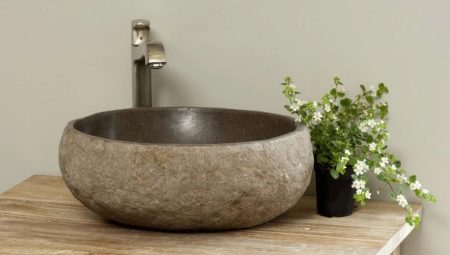
Bathroom furnishings, in addition to aesthetic considerations, should be focused on functionality and durability. It is very important to choose the right plumbing and sink for the bathroom. Recently, bathroom sinks made of artificial stone have gained particular popularity. In construction supermarkets and design offices, you can see washbasin models from both natural and artificial stone. You can find models of any size, overhead, integrated.
If your budget does not allow you to choose from natural variations, you can order a stone sink made of acrylic material. In order for a stone sink to serve for a rather long time, you need to take into account the characteristics of each material and recommendations for use.
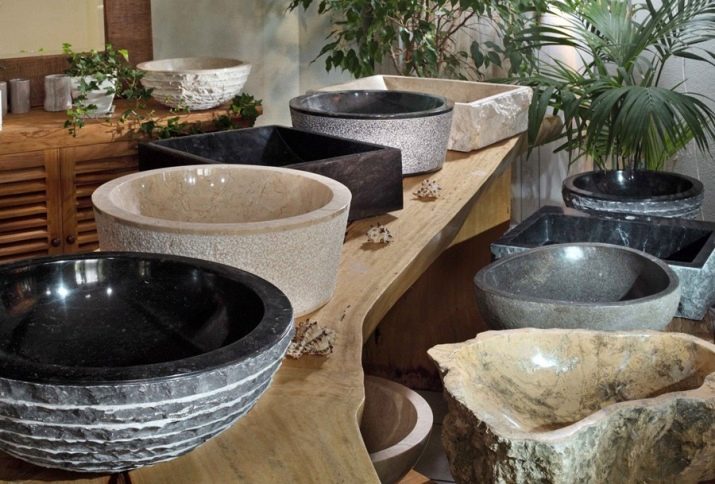
Features of natural material
Natural stone is an excellent material for making plumbing fixtures. In this version, a fairly large piece of stone is taken, from which the desired object is carved. Also, a sink can be created from small pieces connected together. They are made from river stone, onyx, marble, soapstone, basalt and others. The shape is given by sawing, milling, grinding. Models are polished without fail.
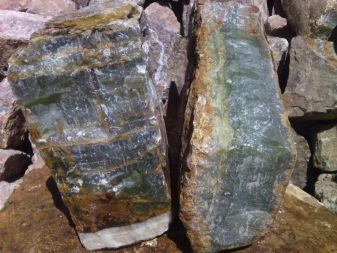
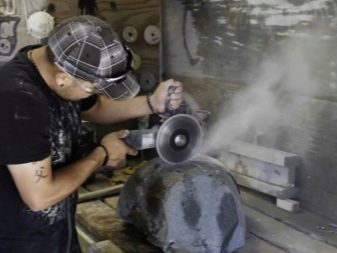

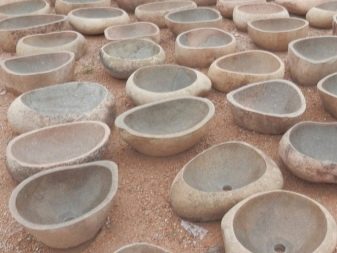
Sinks belong to the elite category of goods from a single piece. Custom-made products with exclusive designs and ornaments are available. The stone is processed to reduce the porosity of the stone without damaging it. This is to prevent moisture from penetrating the pores and causing bacteria to build up.
Natural stone sinks comfortable to use, effective, this is a sign of status. A variety of colors and ornaments allows you to choose options for any style direction. The unique pattern of veins, spots, blotches creates a real work of art. If you seek to find a shell with a catchy, expressive appearance, you should pay attention to models made of onyx, malachite, jasper, marble, jade, sandstone.
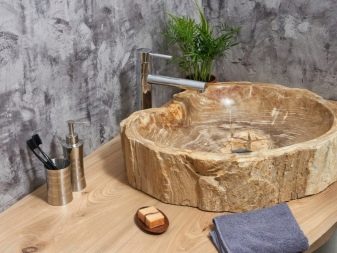
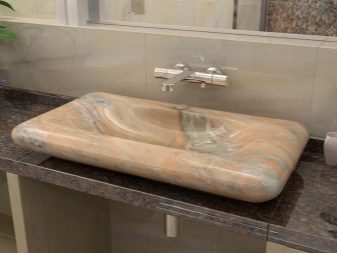
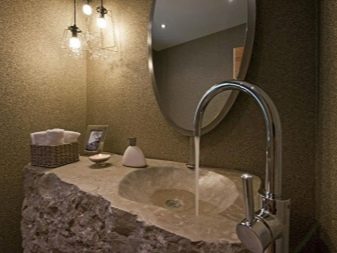
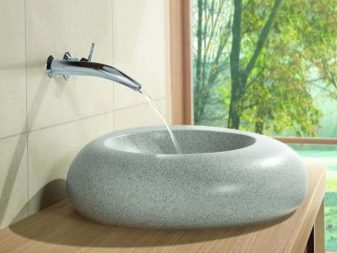
Remember that the brighter the pattern the shell is decorated with, the more concise and calm the shape should be.
Popular materials of manufacture are presented below.
Granite - the most budgetary, durable, popular option, colors allow you to experiment with finishing. Granite is resistant to water, aggressive cleaning agents. Shades of gray, pink, red-pink prevail.
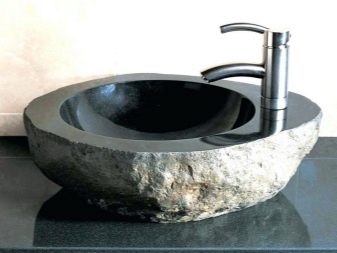
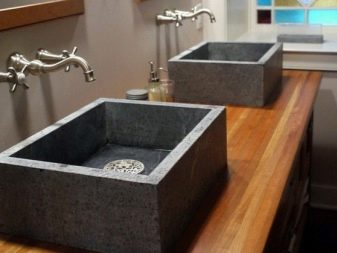
- Marble. Suitable for the most luxurious interiors, brings magnificent palace notes to the design. Very reliable, will last a long time, immune to external influences. Caring for him is simple, high hygiene.
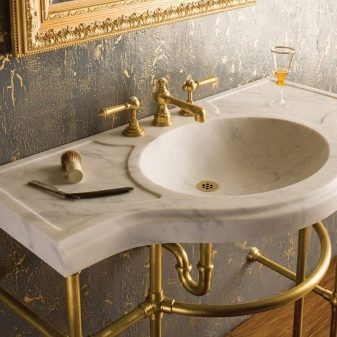

- Onyx. The exquisite design of this stone looks very worthy and status. The shades are quite varied, you can choose from light yellows to chocolate brown. There are varieties with some degree of transparency, shiny like glass. The porosity is very low.
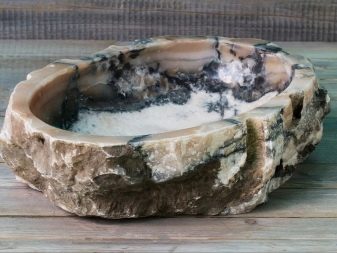
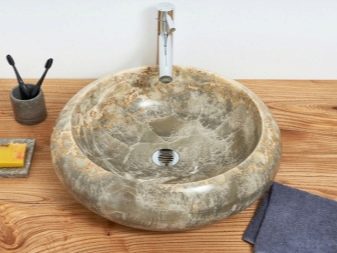
- Basalt. Exclusive models are often made from this stone. Such shells serve for a very long time, the strength is of the highest level. Shades: black, black-green, gray. Very resistant to moisture and aggressive agents.
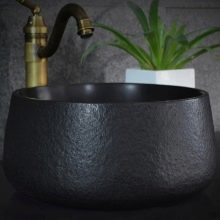
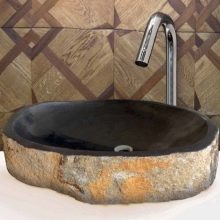

- Travertine. The variety of tones ranges from the lightest to the most intense. Easy to process, patterned texture, very beautiful. Due to its porosity, this material requires a very delicate attitude towards itself.
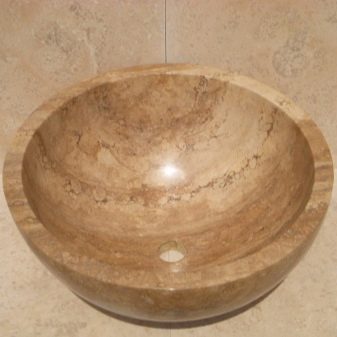
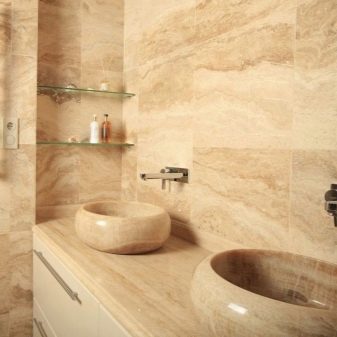
- River stone. Belongs to basalt rocks, a very durable, unusual material. Practical, eco-friendly, allowing you to create the most unusual shapes.
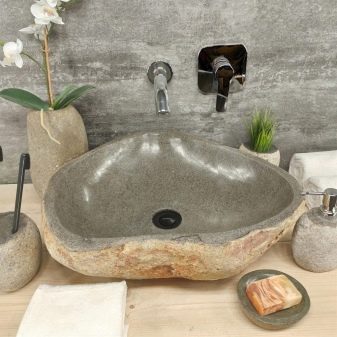
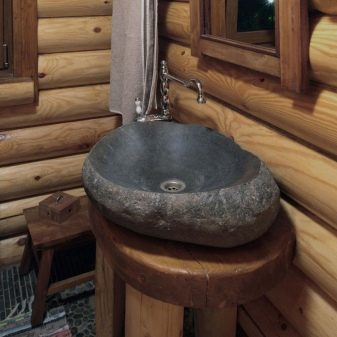
Advantages and disadvantages
The complexity of the process of processing natural stone and the method of its extraction affect the formation of prices upward. At the same time, this material has more and more fans every year. This is facilitated by the following product qualities:
- long service life - in fact, the stone is eternal;
- highest strength;
- invariability of appearance;
- functionality;
- safety from an environmental point of view;
- excellent immunity to temperature extremes;
- texture, spectacular structure;
- presentable, status appearance;
- exclusivity, originality due to the fact that the pattern is not repeated;
- the ability to make products of different sizes, shapes.

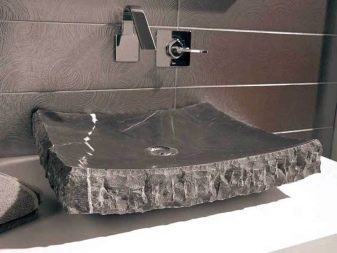

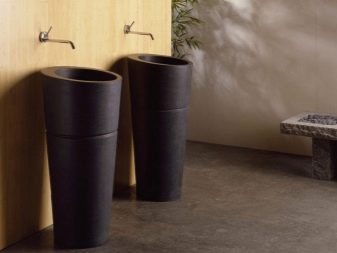
Most often, stone sinks have the following shapes: square, oval, circle, cone, rectangle. You can also make them in the form of bowls, other vessels.
With all the obviousness of the advantages, there are also disadvantages, which must be taken into account:
- stone shells are very heavy;
- installation and delivery are complicated by weight;
- many species do not tolerate aggressive chemicals;
- high price.
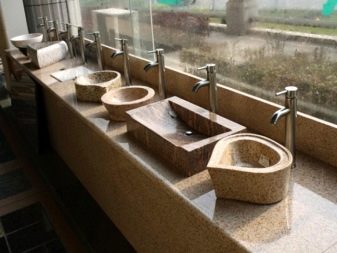

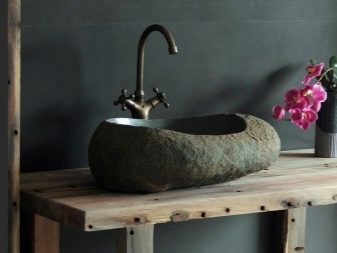
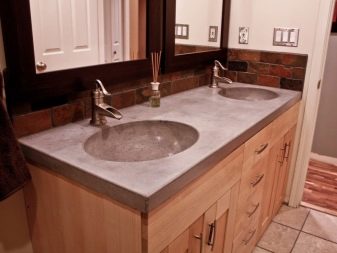
In addition, stone plumbing definitely raises the requirements for style and other interior items. Everything must correspond to the declared status, otherwise the overall picture will be ridiculous. A stone sink will look strange in the bathroom of a Khrushchev apartment. If you like a stone, but the cons stops you, pay attention to artificial materials that mimic it.
Natural or Artificial?
Artificial stone sanitary ware looks the same as natural one, at the same time it is characterized by high strength and durability in use... Sometimes, in terms of characteristics, he surpasses his natural rival. For example, a fall of a heavy object can be easily sustained. This material is made from crumb, polymer, acrylic, pigments, hardeners, plasticizers. They cost significantly less.
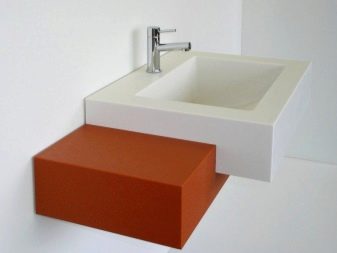

Of course, the presence of chemicals makes such sinks less environmentally friendly. But in case of damage, it is very easy to restore such a product.
Features of products from stone chips:
- the ratio of stone and crumbs of metal, glass and other components in them may be different;
- the composition is constantly subject to updates due to the use of safer innovations;
- design can be absolutely anything;
- artificial material is very plastic;
- most often the composition is presented in the following proportions: 80% stone chips to 15% acrylic and 5% pigment;
- if there are fewer crumbs in the composition, the product will not be quite durable.


Imitations have many advantages:
- outwardly very aesthetic;
- the textures are diverse, the color range is rich, you can choose products of matte and glossy types;
- quite durable, a good quality sink will last about 10 years with proper care;
- resistant to external damage;
- tolerate temperature contrast well;
- it is easy to care for them;
- non-porous surface ensures complete hygiene.
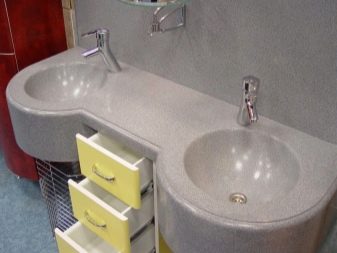
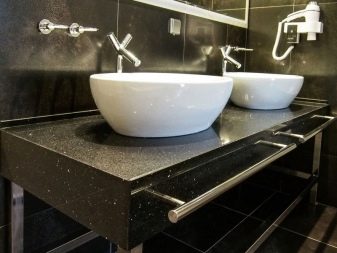
As for the cons, it should be noted:
- they do not tolerate too high temperatures;
- detergents with a chemically aggressive environment can damage the surface;
- the price is budgetary in comparison with natural stone, but higher than other materials.
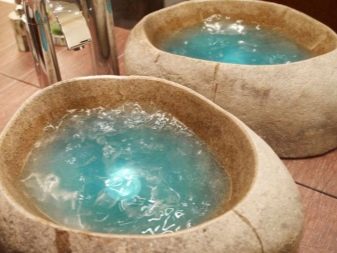

Recommendations for use and installation
Even the highest quality material requires compliance with certain rules during installation and subsequent use. Experts recommend considering the following points:
- the weight of the sink should be evenly distributed over the entire surface of the support;
- the support should be as reliable as possible;
- a metal countertop, a forged stand are well suited for such plumbing;
- water should drain efficiently, the sink should dry;
- if you are using wooden countertops for embedding, it is better if they are reinforced with metal;
- the assembly of the drain should not be accompanied by a stressful impact on the stone, you should not sharply twist the thread - you should be careful;
- do not place sinks under heavy objects that may fall;
- the operation of stone plumbing does not require too much effort, but it is necessary to prevent aggressive, abrasive detergents from entering the surface;
- remember that substances containing pigments can color the stone.
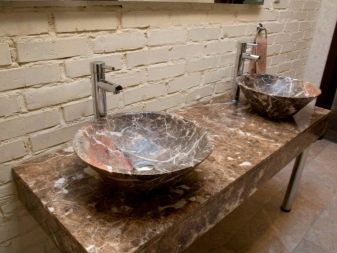
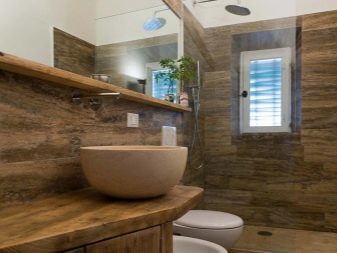
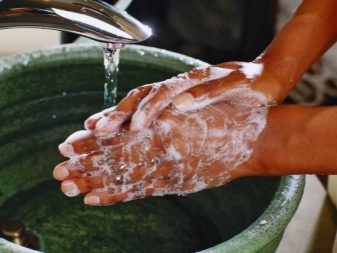

Sink sizes
It is very important that the size of the sink does not disappoint during use, therefore, you should pay attention to the following points:
- bathroom area - you should not clutter up a small room with oversized products, there are many compact models that are appropriate in any bathroom;
- the optimal parameters for comfortable use of the sink are from 40 to 740 cm;
- a sink of less than 40 cm will not allow you to wash well: water will fly in all directions, splatter surfaces;
- a sink that is too large will look cumbersome, in addition, it is more difficult to approach it;
- the width and depth of the product are also important.
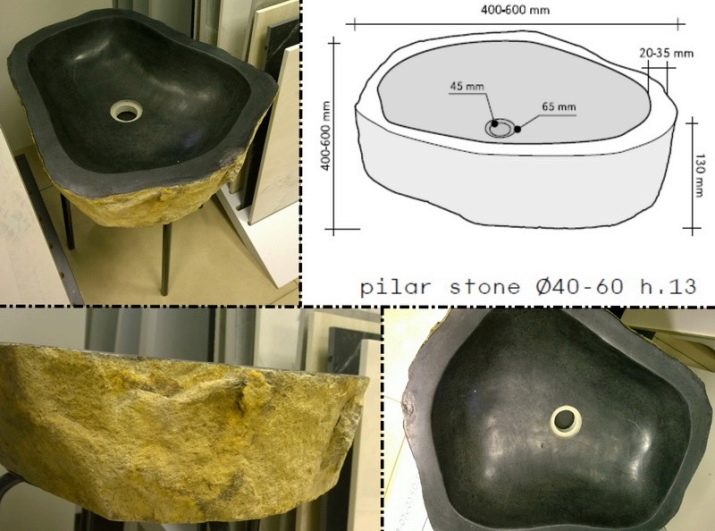
For information on how to make a stone sink with your own hands, see the next video.








